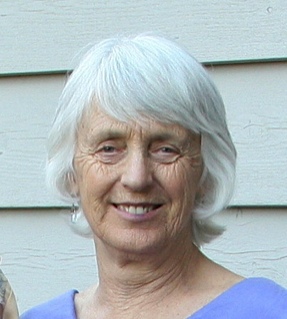Reflections on Birth, Growth, Decay, Death
 “Birth, growth, decay and death.”
“Birth, growth, decay and death.”
Babaji offered us this phrase on his chalkboard so many times over the years. When we’d ask about human life, when we’d ask about death, when we’d ask about liberation – it appeared often in answering so many questions. Human incarnation, he explained, begins with taking birth in a physical body, proceeds through growth (of the physical body, of the mental capacity, as well as the emotional understanding), continues with the decay process, and finally dies. At that point, the ineffable soul leaves the body. The prana (vital life force) separates, leaving behind only the empty shell, the elements of nature.
In reflecting on Babaji’s terse phrase describing the human life span, I pondered the decay part. ‘Doesn’t the decay part come after death?,’ I wondered. The decay part brought to mind an old saying from my childhood. We used to taunt each other with the chant: “the worms crawl in, the worms crawl out, the worms play pinochle on your snout!” The image was of the body decaying after it was buried in the earth.
But on further reflection (and as this body began to age), the realization dawned that actually the decay begins before death, as the body proceeds to decompose itself in preparation for the final separation of body and soul. In Ayurveda, the vata dosha governs this last stage of life, as the body parts begin to wear out, or the inherent weakness of a particular organ becomes problematic. It’s almost as if the body has a built-in process of tearing itself down prior to the release of the life force at death.
When we’re young and growing this human form, there’s little realization that we’re living in a mortal body. Yes, we may see the death of a beloved pet or view a grandparent during the dying process, but somehow we don’t relate it to ourselves, and to the possibility that this body we’re growing will sometime cease to exist. We’re young, we’re strong, we’re healthy! How could it not be ever thus!!
But after a few decades, we can’t help noticing a new “laugh lines” around the eyes, a few grey hairs sprouting on the head, or a little less stamina while playing basketball. But still there is a reluctance to make the connection with ‘signs of aging.’ In our youth-oriented culture, the assumption is that we’ll be young forever and we don’t want to notice the subtle changes that begin while we’re still young.
And yet, the Dalai Lama has often told us that he meditates on his own death “every day” and recommends for us to do the same. For just as Babaji has also reminded us, ‘birth and death are two ends of the same rope.’ Perhaps he was hinting at the value of being aware that we’ve taken up residence in the body-mind complex that is temporary, is basically on loan to us for a lifetime!
And eventually, we notice the truth spoken by Jambavan, King of the Bears in Babaji’s version of the Ramayana, “You never know which part is going to give out next.” We notice a pain in the hips, a forgetfulness in remembering names, a decrease in sexual libido. We hear ourselves asking, “What did you say?” more often, or experiencing gas and bloating after eating. Many people face a diagnosis of cancer, or mini-strokes. Aging can begin most anywhere, and we’re off to give ourselves to the medical system to help restore function and balance in our life.
And so we begin the adventures in aging – when we learn to live with and in the aging, decaying body. The sense of loss can be keen, and yet most of us opt for living with the losses as long as we can. And with a growing sense of acceptance, the journey can be fascinating, as well as humorous, as we watch and wait to see ‘which part is going to give out next.’
During these dark days of winter, as we celebrate Shiva Ratri, reflections on our span of life seem appropriate somehow. And at the same time, we see that the cycle of life continues. Crocus and daffodil shoots appear through the snow or the mulch; pussy willow buds appear; the weather begins to warm slightly and the icy layer on the pond begins to thin. And we are reminded that the cycle of life does indeed go on, all the elements continuing recycling themselves from one body to the next.
May your celebration of these dark days be filled with light as the cycle of life goes on!
~pratibha

Pratibha Queen is an Ashtanga Yoga instructor and Ayurvedic practitioner who lives in Santa Cruz. She is a member of DSS who attends Salt Spring Centre of Yoga retreats on a regular basis. All quotes above are from the writings of Baba Hari Dass.
[Fern photo: Creative Commons Zero license]
